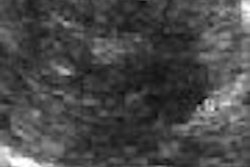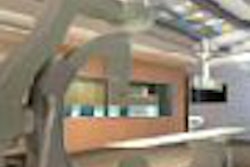Treatment specialists experimenting with molecular medicine will achieve more targeted results by injecting drugs with imaging guidance rather than "carpet bombing" muscles, then hoping that the drugs take effect, according to a presentation at the 2008 International Symposium on Endovascular Therapy (ISET) meeting in Hollywood, FL.
"In human trials, there is no way to monitor the appropriate site to inject the drugs, to monitor delivery of the drugs, to monitor how the drugs traffic in the body, and no way to monitor how those drugs engraft," said Dr. Lawrence "Rusty" Hofmann, chief of interventional radiology at Stanford University Medical Center in Stanford, CA.
The solution to all those problems lies with imaging, Hofmann stated. Future interventional radiology suites will likely require PET/CT, MRI, and fluoroscopy units. "Image co-registration will be the key," he said.
These images can then be evaluated to guide cell-based therapeutics using hematopoietic stem cells, embryonic stem cells, bone-marrow mononuclear cells, adipose stromal cells, mesenchymal stem cells, and endothelial progenitor cells.
Hofmann explained that some molecular agents are injected inches deep into the legs in 22 injections. In overweight or obese patients (those with unevenly distributed fat), the injected material may not make it past the fat cells and treatment would be compromised. However, imaging studies could help guide injection by differentiating fat from muscle.
Similarly, experimental drugs are injected into veins or arteries to break clots in peripheral artery disease. With angiographic imaging and a catheter-based x-ray-guided system, the drug is delivered directly to the blockage, improving targeting of the drug.
Hofmann stressed that interventional oncology and interventional regenerative medicine will pair imaging and molecular therapeutics, as imaging plays a pivotal role in therapeutic angiogenesis.
By Edward Susman
AuntMinnie.com contributing writer
January 31, 2008
Related Reading
Endomyocardial injection of bone marrow cells improves severe CAD, January 16, 2008
Copyright © 2008 AuntMinnie.com



















